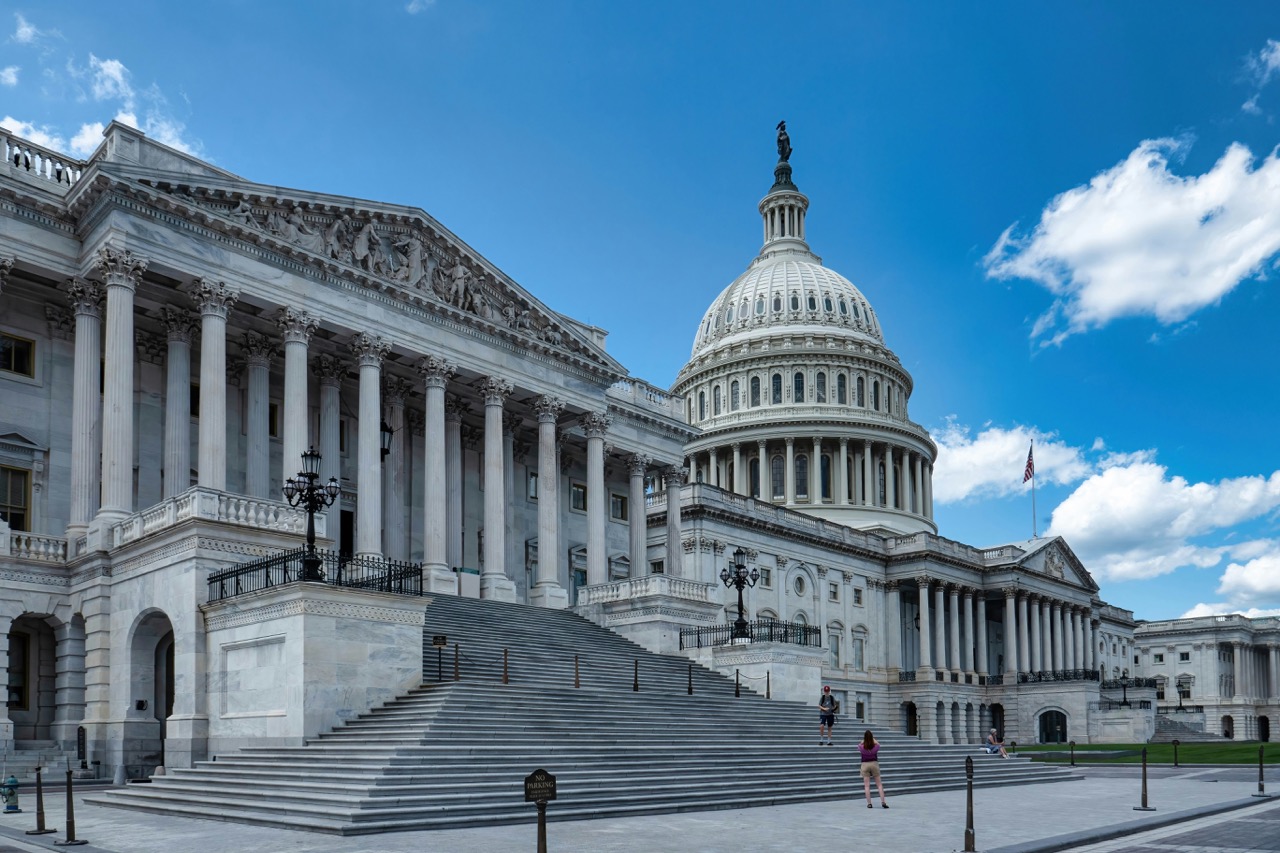How the “One Big Beautiful Bill Act” Impacts Athletes: Detailed Tax Analysis and Real-World Scenarios

The One Big Beautiful Bill Act, signed into law by President Trump on July 4, 2025, brings sweeping tax changes that directly impact professional athletes.

The One Big Beautiful Bill Act, signed into law by President Trump on July 4, 2025, brings sweeping tax changes that directly impact professional athletes. Whether you’re negotiating your next contract, investing in business ventures, or planning your legacy, understanding these changes is key to maximizing your after-tax wealth. Each section below includes what changed, real-world scenarios, and actionable tips.
1. Tax Rate Changes: Permanent Brackets, Inflation Adjustments
What Changed?
The tax brackets from the 2017 TCJA are now permanent, with annual inflation adjustments starting in 2025.
Scenario:
- You’re an MLB player earning $12 million/year. Your marginal rate remains at 37%, but inflation indexing means more of your income may fall into lower brackets over time, saving you thousands in federal taxes.
- You sign a multi-year contract with annual raises. Because brackets adjust for inflation, your effective tax rate may rise more slowly than your salary.
Actionable Tip:
Review your withholdings and estimated tax payments annually with your tax advisor to avoid over- or underpaying as brackets shift.
2. State and Local Tax (SALT) Deduction Cap: Temporary Relief with Income Phase-Out
What Changed?
The SALT deduction cap is raised to $40,000 (from $10,000) through 2029, with a phase-out for MAGI (modified adjusted gross income) above $500,000 (married) or $250,000 (single). The cap and thresholds rise by 1% per year, then revert to $10,000 in 2030.
Scenario:
- You play for a New York team, earn $400,000, and pay $35,000 in state/local taxes. You can now deduct the full $35,000.
- You receive a playoff bonus or contract incentives, pushing your MAGI to $700,000. Your deduction phases down rapidly—likely capped at $10,000.
Actionable Tip:
Work with your tax advisor to time income and deductions for maximum benefit during the temporary cap increase.
3. Estate Planning: Higher Exemptions for Inherited Wealth
What Changed?
The One Big Beautiful Bill Act permanently increases the federal estate, gift, and generation-skipping transfer (GST) tax exemption to $15 million per individual (or $30 million per married couple) for deaths and gifts occurring on or after January 1, 2026, with annual inflation adjustments thereafter. The top federal estate and gift tax rate remains 40% on amounts above the exemption.
No Sunset—More Time for Strategic Planning
Unlike prior law, which would have halved the exemption at the end of 2025, this increase is permanent and not subject to a scheduled sunset. Athletes and other high-net-worth individuals now have more flexibility and time to review and implement their estate plans thoughtfully, without the pressure of a looming expiration.
Scenario 1: Estate Below the Exemption
If your total net worth (including real estate, investments, business interests, and future earnings) is below $15 million (single) or $30 million (married), you will not owe federal estate tax under current law. This allows you to focus on other legacy goals, such as charitable giving, family trusts, or business succession, rather than aggressive tax-driven gifting.
Scenario 2: Estate Exceeds the Exemption
If your projected estate exceeds $15 million (single) or $30 million (married)—for example, due to lucrative contracts, endorsements, investments, or business holdings—amounts above the exemption will be subject to a flat 40% estate tax. In this case, proactive planning is essential:
- Lifetime Gifting: Consider making gifts during your lifetime to utilize your exemption, especially if you have already used part of your exemption in prior years (the new $15M limit is reduced by prior taxable gifts).
- Grantor Trusts: Use grantor retained annuity trusts (GRATs), irrevocable life insurance trusts (ILITs), or other advanced strategies to transfer appreciation and insurance proceeds outside your taxable estate.
- Charitable Planning: Establish private foundations or donor-advised funds to remove assets from your estate and support philanthropic goals.
- Valuation Discounts: For business or real estate interests, consider structuring ownership to leverage valuation discounts for lack of marketability or minority interests.
- Portability: Married couples should ensure proper use of the “portability” election to maximize the combined $30M exemption.
Action Steps:
- Review and update your estate plan to align with the new exemption levels and your legacy goals.
- If your estate may exceed the exemption, implement advanced gifting and trust strategies to minimize estate tax exposure.
- Monitor any future legislative changes and coordinate with state estate tax laws, which may have lower exemptions.
4. Qualified Business Income (QBI) Deduction: Permanent 20% Deduction
What Changed?
The 20% QBI deduction for pass-through entities (LLCs, S-Corps) is now permanent.
Scenario:
- You own a training facility as an LLC. If the business earns $500,000, you can deduct $100,000 from your taxable income.
- You launch a media company post-retirement. Structuring as an S-Corp lets you use the QBI deduction.
Actionable Tip:
Review your business structures with a CPA to ensure you qualify and maximize the QBI deduction.
5. Child Tax Credit: Increased and More Accessible
What Changed?
The child tax credit rises to $2,200 per child (with $1,400 refundable), with phase-out starting at $200,000 (single) and $400,000 (married), indexed for inflation.
Scenario:
- You have three children and a $350,000 income. You receive a $6,600 credit.
- Your income jumps above $400,000 due to a new contract or signing bonus. The credit phases out.
Actionable Tip:
Plan large income events (like bonuses or endorsements) with your tax advisor to optimize eligibility for family credits.
6. Clean Energy Incentives: Shorter Window for Tax Credits
What Changed?
Many clean energy credits phase out by 2026, but the Sec. 45Y clean electricity production credit is extended through 2027.
Scenario:
- You’re building a new home and want solar panels. Install before 2026 to claim the maximum federal credit.
- You invest in a green business—ensure the project qualifies and is completed before credits expire.
Actionable Tip:
Fast-track clean energy projects to lock in available credits before they sunset.
7. Gambling and Betting: Loss Deduction Limited
What Changed?
Starting in 2026, you can only deduct 90% of gambling losses against winnings (down from 100%).
Scenario:
- You win $500,000 at a poker tournament but lose $500,000 in other bets. You can only deduct $450,000, so you’ll owe tax on $50,000 of “phantom” income.
Actionable Tip:
Keep meticulous records of all gambling activity and consider limiting large bets to minimize tax exposure.
8. Miscellaneous Deductions: What Athletes Can Still Deduct
What Changed?
Business expenses directly tied to your professional career remain deductible only if they are connected to self-employment or endorsement income. For MLB players (and most professional athletes), salary is paid as a W-2 employee of the team. Under the One Big Beautiful Bill Act, the suspension of miscellaneous itemized deductions—including agent fees, clubhouse dues, union dues, and unreimbursed employee expenses—has been made permanent. These expenses are no longer deductible against your W-2 salary.
Scenario:
- You’re an MLB player earning a salary from your team. You pay agent fees (typically 3–5% of your salary), clubhouse dues, and union dues. None of these expenses are deductible against your W-2 salary under current law.
- However, if you have endorsement or appearance income reported on a 1099 (self-employment income), you can deduct expenses directly related to that income—such as travel for a commercial shoot, marketing costs, or a portion of your agent’s fees specifically tied to endorsement deals.
Actionable Tip:
Keep detailed records separating expenses related to your endorsement/self-employment income from those related to your team salary. Only claim deductions for expenses that are directly connected to your 1099 income. For W-2 salary, plan your cash flow knowing that agent fees, clubhouse dues, and other unreimbursed employee expenses are not deductible under the permanent law.
9. Trump Account: New Tax-Advantaged Children’s Savings—How to Coordinate with 529 Plans and Gifting Limits
What Changed?
The Act introduces “Trump Accounts”—federally sponsored savings for children born 2025–2028, with a $1,000 government seed deposit and up to $5,000/year in contributions (indexed to inflation from 2027), including $2,500 from employers, tax-free.
Key Features and Tax Treatment:
- Funds must be invested in a low-cost U.S. equity index fund.
- Withdrawals for qualified purposes (education, first home, business) are taxed at long-term capital gains rates. Non-qualified withdrawals before age 30 are taxed as ordinary income and may incur a penalty.
- Full withdrawal required by age 31.
- No tax deduction for contributions; earnings grow tax-deferred.
- Contributions count toward the annual gift tax exclusion ($19,000 per beneficiary in 2025).
Scenario:
You contribute $10,000 to a 529 plan and $5,000 to a Trump Account for your child in 2025. You have used $15,000 of your $19,000 annual gift tax exclusion.
Actionable Tip:
Coordinate 529 and Trump Account contributions each year to stay under the annual gift tax exclusion. Prioritize 529s for education savings, and use Trump Accounts for added flexibility.
10. Charitable Contribution Deduction: Expanded and Adjusted
What Changed?
- Non-itemizers can deduct up to $1,000 ($2,000 joint) in charitable contributions above the standard deduction starting in 2026.
- Itemizers can only deduct the portion of gifts exceeding 0.5% of AGI, subject to the 60% AGI limit for cash gifts.
Scenario:
You donate $110,000 to an organization. If your AGI is $10 million, only the amount above $50,000 (0.5% of AGI) is deductible—so $60,000 is deductible, subject to the 60% AGI limit.
Actionable Tip:
Plan your charitable giving to maximize deductibility—consider bunching gifts into a single year or using donor-advised funds.
11. Credit for Contributions to Scholarship-Granting Organizations (SGOs)
What Changed?
A new nonrefundable tax credit is available for contributions to state-certified SGOs that provide K-12 scholarships:
- Credit equals 75% of your contribution, up to $5,000 (single) or $10,000 (joint).
- Contributions used for this credit cannot also be deducted as charitable contributions.
Scenario:
You donate $10,000 to a qualified SGO supporting student-athletes. You can claim a $7,500 tax credit (75% of your contribution, up to the $10,000 cap for joint filers).
Actionable Tip:
If you want to support education and reduce your tax bill, consider directing some of your charitable giving to SGOs. You cannot claim both a credit and a deduction for the same contribution.
12. Deduction for Car Loan Interest: New Temporary Benefit
What Changed?
For tax years 2025–2028, you can deduct up to $10,000/year in interest paid on loans for new, U.S.-assembled vehicles. The deduction phases out for MAGI over $100,000 (single) or $200,000 (joint) and is not available for used or imported vehicles.
Scenario:
You purchase a new U.S.-assembled SUV for $70,000 in 2025, finance $60,000 at 8% interest, and pay $4,800 in interest. If your MAGI is $180,000 (joint), you can deduct the full $4,800.
Actionable Tip:
Prioritize U.S.-assembled vehicles and finance through a loan to take advantage of this temporary deduction. Keep documentation showing U.S. assembly.
13. Enhanced Deduction for Seniors
What Changed?
An additional $6,000 standard deduction for seniors (age 65+) is available for 2025–2028, phased out for MAGI above $75,000 (single) or $150,000 (joint).
Scenario:
You retire and are 65. The higher deduction lowers your taxable income, especially if you have few itemized deductions.
Actionable Tip:
If you’re approaching 65, consider deferring income or deductions to the year you qualify for the enhanced deduction.
14. 529 Plan Qualified Expenses: Still a Top Education Tool
What Changed?
529 plan benefits are unchanged: tax-free growth and withdrawals for qualified education expenses.
Scenario:
You save $100,000 in a 529 plan for your child’s college. All growth and withdrawals for tuition, books, and room/board are tax-free.
Actionable Tip:
Maximize annual contributions to 529s for long-term, tax-free growth for education. Also note that you can convert up to $35K of unused funds to a Roth IRA after 15- years for the beneficiary.
15. Bonus Depreciation: Permanent 100% Expensing for Qualified Property
What Changed?
The Act permanently restores 100% bonus depreciation for most tangible personal property with a recovery period of 20 years or less and certain qualified improvement property. For qualified property acquired and placed in service on or after January 19, 2025, you can now deduct the full cost in the year the asset is put into service.
- For property acquired before January 19, 2025 and placed in service after that date, you may elect to use the prior 40% bonus depreciation rate for your 2025 tax year.
- New, elective 100% first-year depreciation for Qualified Production Property (QPP)—nonresidential real estate used in manufacturing, production, or refining tangible personal property.
- Section 179 expensing cap is increased to $2.5 million, with phase-outs starting at $4 million.
Scenario:
You purchase $1.8 million in new gym equipment in March 2025. Under the new law, you can deduct the entire $1.8 million in 2025. If you break ground on a new training facility in 2026 and it qualifies as QPP, you can elect to fully expense the cost in the year it’s placed in service.
Actionable Tip:
Accelerate your capital investments to take full advantage of immediate 100% expensing. Review capital plans with your tax advisor.
16. Opportunity Zones: Permanently Enhanced Tax Incentives for Community Investment
What Changed?
The Opportunity Zone (OZ) tax incentive program is now permanent. Investors can defer eligible capital gains by investing in Qualified Opportunity Funds (QOFs) with no expiration date.
- Recurring 10-year designation period for OZ census tracts, starting in 2026.
- Enhanced benefits for Rural QOFs (30% basis boost, lower substantial improvement threshold).
Scenario:
You sell a business or real estate asset for a $5 million gain. By investing that gain in a QOF, you can defer tax for up to five years or until you sell your QOF investment. If you hold the QOF investment for at least ten years, any appreciation is tax-free.
Actionable Tip:
Consider rolling large capital gains into a QOF to defer (and potentially eliminate) capital gains tax. Prioritize investments in rural zones for enhanced benefits.
17. Qualified Small Business Stock (QSBS): Enhanced Tax Benefits and Easier Access
What Changed?
The Act expands QSBS benefits under IRC Section 1202 for stock issued after July 4, 2025:
- Minimum holding period for gain exclusion: 3 years (50%), 4 years (75%), 5+ years (100%).
- Maximum gain eligible for exclusion increases from $10M to $15M (or 10x basis), indexed for inflation.
- Gross asset test for the issuing corporation rises from $50M to $75M.
- Broader eligibility for investors (including partnerships and S corps).
Scenario:
You invest in a sports tech startup in August 2025. If you hold the shares for five years and the company meets the new $75M asset test, you can exclude up to $15M of gain from federal tax.
Actionable Tip:
Ensure the company is a C corporation and meets the asset test. Track your holding period to maximize the exclusion. Use QSBS as part of your long-term wealth and exit planning.
Conclusion: Take Control of Your Tax Future
The One Big Beautiful Bill Act creates both challenges and opportunities for athletes and high-net-worth individuals. With careful planning and proactive advice, you can maximize deductions, credits, and long-term wealth.
If you have any questions or need guidance on how these changes apply to your situation, don’t hesitate to reach out. We can help you optimize your tax strategy and ensure that you’re taking advantage of every opportunity available to you.
Transcript
Share this post
Related articles
Your Family Office

We're here to help you navigate.
Our advisors are ready to serve as your Athlete Family Office.
Your Family Office

We're here to help you navigate.
Our advisors are ready to serve as your Athlete Family Office.








